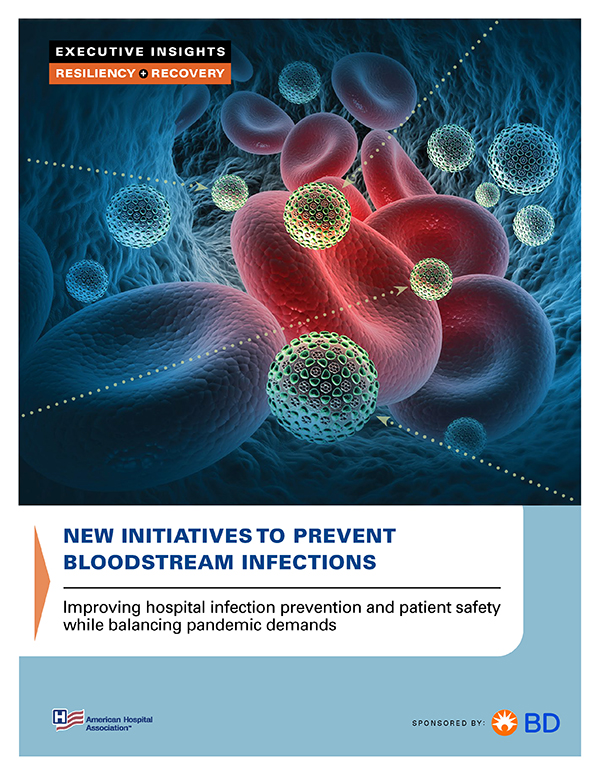By Kalvin Yu, MD, FIDSA, Vice President, U.S. Medical Affairs, BD, and Tony Ezell, President, North America & Chief Marketing Officer, BD
As we grapple with the challenges of the ongoing COVID-19 pandemic, many resources have been necessarily diverted to outbreak management. However, the need for continued focus and innovation around hospital infection prevention efforts, and specifically bloodstream infections, during this time remains vital. Medical technology companies must work hand-in-hand with leading experts to solve the biggest challenges facing hospitals and the U.S. health care system at large.
BD and the American Hospital Association™ (AHA) recently convened hospital and health system leaders from across the country to discuss approaches on how to improve hospital infection prevention and patient safety while balancing pandemic demands.
Over the past 10 years, U.S. health care providers have made significant progress in reducing health care-associated infections (HAIs) and, as a result, health care is safer. As the field looks to build on this success and continue eliminating HAIs, new initiatives are being explored in preventing bloodstream infections. Hospital-onset bacteremia and fungemia (HOB) is a new area of focus for infection preventionists and front-line clinical staff to prevent additional bacteremias and enhance patient safety.
Here are three key findings from the expert panel:
- Hospitals are experiencing higher rates of HAIs among patients with COVID-19 versus those who did not have COVID-19. Workforce shortages, high staff turnover and medical supply disruptions in the health care setting put additional pressure on hospitals' infection prevention efforts.
- Hospitals are using data and analytics to predict infections, and clinical dashboards to monitor trends, as they balance pandemic-related demands with more routine hospital infection prevention.
- More resources are needed to support hospitals in their efforts to reduce avoidable infections and engage clinical staff in training and monitoring.
As we look forward, the challenge of managing infection prevention strategies is one that we all must come together to support. We are committed to keeping this key issue front and center while working together with our industry partners and health care providers to address challenges and drive new solutions that will enhance the care and safety of patients. Learn more and download the full executive dialogue and insights in the eBook published by AHA here: New Initiatives to Prevent Bloodstream Infections.
To follow the conversation on Infectious Diseases, subscribe to our BD blog below.
Subscribe to receive BD blog alerts
